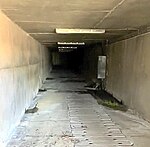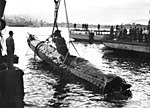Fort Denison Light
1913 establishments in AustraliaLighthouses completed in 1913Lighthouses in SydneySydney Harbour National ParkUse Australian English from June 2011

Fort Denison Light, also known as Pinchgut Light, is an active lighthouse located on top of a Martello Tower at Fort Denison, a former penal site and defensive facility occupying a small island in Sydney Harbour, New South Wales, Australia. The island is located downstream from the Harbour Bridge near Potts Point and the Royal Botanic Gardens. The fort is also known as "Pinchgut" lending its name to the light.
Excerpt from the Wikipedia article Fort Denison Light (License: CC BY-SA 3.0, Authors, Images).Fort Denison Light
Mrs Macquaries Road, Sydney Sydney
Geographical coordinates (GPS) Address Website Nearby Places Show on map
Geographical coordinates (GPS)
| Latitude | Longitude |
|---|---|
| N -33.854622222222 ° | E 151.226025 ° |
Address
Fort Denison (Pinchgut)
Mrs Macquaries Road
2000 Sydney, Sydney
New South Wales, Australia
Open on Google Maps











